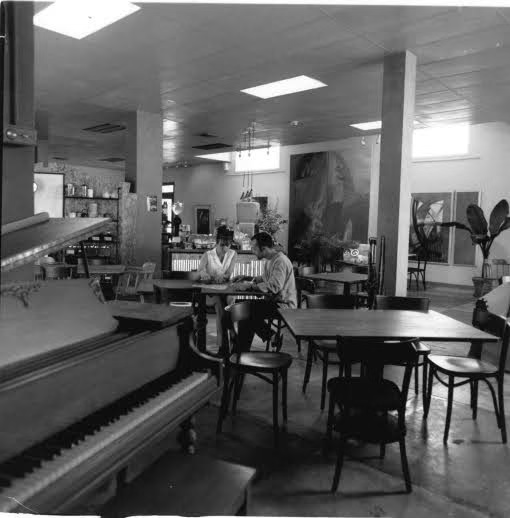The GOP Built a Propaganda Empire. Democrats Built a Consultancy Firm.
For at least a few decades, Republicans and Democrats have been following two very different strategies when it comes to political messaging. And the GOP is doing it effectively — making big, bold statements — while cautious Democrats are getting wiped out.
Republicans are leading public opinion while Democrats are trying to chase it. That does not work.
The essence of the problem is that the corporate wing of the Democratic Party tells their politicians and ad people that they need to pay careful attention to public polling and calibrate their positions around “where the public is at.” And, of course, don’t take positions (like Medicare for All) that would offend donors (insurance companies, in this case).
The results are “safe,” focus-grouped policies that fail to inspire or move voters. And, even more importantly, don’t change public opinion itself.
A few weeks ago, corporate-funded Democrats held a retreat organized by Third Way, a remnant of Bill Clinton’s 1990s embrace of neoliberalism. One of their primary conclusions was that Democratic politicians need to move away from “the left” and instead reconnect culturally with the working class. They argued that the Party must:
- “Reduce Far-Left Influence and Infrastructure
- “Build a moderate Democratic infrastructure, including media, talent pipelines, and communications networks.
- “Push back against far-left staffers and groups that exert a disproportionate influence on policy and messaging.
- “Ban far-left candidate questionnaires and refuse to participate in forums that create ideological purity tests.”
In other words, stop trying to convince voters that Democrats are right about things like free healthcare and college, breaking up corporate monopolies, taxing the morbidly rich to ensure the solvency of Social Security, guaranteeing the right to vote, or getting corporate and billionaire money out of politics; instead, just operate within the Republican frame and rant about “illegal” immigrants, trans people in sports (see Gavin Newsome as he commits political suicide), and suck up to young white men.
Republicans, on the other hand, have spent the past four decades actively trying to bend the will of voters to their point of view, rather than chasing what polling says voters want. And they’ve had considerable success.
The New York Times points out, for example, that Republican voters have gone from only 6 percent saying that “a woman’s place is in the home” in 2008 to 48 percent of Republican men and 37 percent of Republican women essentially agreeing with that sentiment today. This has happened because Republican leaders have aggressively pushed the idea that men should oversee both the world and the family, and women should be subordinate.
They’ve been promoting a twisted kind of masculinity for several decades, to the point where Trump just pardoned a couple of rapists and celebrated it; young men are seeing him as a role model. Their meme is contagious and spreading.
Trump has been credibly accused of rape or sexual assault by over 20 women, found liable for the same, twice by a jury of his peers, and blatantly and openly cheated on all three of his wives. Elon Musk has produced at least 14 children in his apparent quest to spread around his “good genes,” including three children in one year by three different women.
Virtually the entire GOP leadership — including almost all the positions that wield real power — are either men or women who, like Kristi Noem and Pam Bondi, revel in a male-like “tough guy” persona combined with an explicit, exaggerated female sexuality designed to appeal to men.
Other examples of the public adopting Republican positions include widespread acceptance of the GOP frame that voter suppression is necessary to prevent “illegals” from voting, that America has been “invaded” by brown-skinned people through our southern border, and that tax cuts for billionaires and tariffs on imported goods are great ways to help out average working-class people.
The Clinton presidency was the turning point for the left, when Democrats embraced Reagan’s neoliberalism and Bill Clinton declared that “the era of big government is over” and “we have ended welfare as we know it.”
While the GOP has pushed a continual stream of policy positions that have changed the minds of the electorate (male supremacy being only one of dozens), Democrats have been largely paralyzed policy-wise by their Clintonian addiction to corporate money and the consultants it buys.
Further proof of how this works came from a polling analysis by Blueprint done in the days leading up to the 2024 election and immediately after November 5th. Democrats had failed to offer bold policy proposals to solve the perceived problems of the country, relying instead on asserting that Joe Biden had done a great job and we should “stay the course.”
Republicans, on the other hand, filled the airways and social media with specific claims that Kamala Harris supported taxpayer-funded transgender surgery for undocumented immigrants, was going to outlaw gas-powered cars, wanted to throw our border crossings wide open, ban fracking, and defund the police.
And it worked, in part because the GOP has spent the past 50 years building out a massive media and social media infrastructure for which Democrats have no equivalent, and more largely because the Republican claims were so outrageous, emphatic, and oft-repeated.
Among undecided voters who broke for Trump in the last two months of the election, they found, fully 83% believed the story about Harris wanting to fund surgeries, 82% thought she wanted to require all cars to be electric by 2035, 77% were convinced she would decriminalize border crossings, and 72% told pollsters Harris would strip most funding from local police departments.
None of these things, of course, were her positions and she had not campaigned on even the slightest variation of any of them. They were all manufactured Republican fantasies/lies.
The two lessons that explain why this worked for Republicans are the ones Goebbels posited 91 years ago: Repeat a story often enough, even if it’s an outrageous Big Lie, and people will believe it; and when you take strong, unpopular positions and stand by them public opinion will bend toward you.
We see this at work today as Trump’s Goebbels wannabee, Stephen Miller, takes America to the next step of gutting the New Deal and Great Society, replacing them with Trump’s vision of a government run by a strongman leader who only respects or fights for straight white men.
He recently posted to social media, speaking of what happened during “the last four years” of the Biden administration:
“We were invaded and occupied.
“Entire neighborhoods were conquered.
“Entire towns were subjugated.
“Our treasury was in the plundered.
“Our democracy was torn apart piece by piece. A national referendum was held on whether to surrender to the invasion or repel it.
“America voted for liberation.”
You may laugh, but Miller is dead serious. Whether he believes it’s true or not is irrelevant; what he knows is that if he repeats it often enough millions will adopt it as their own.
The lesson here is that Democrats must stop chasing public opinion and tolerating people like Steve Bannon and Charlie Kirk and instead stake out strong, bold Democratic-owned policy positions that they hammer in every possible venue.
And, unlike Republicans, they don’t need to lie to their electorate to make their points:
— Every other advanced nation (and many less advanced, like Costa Rica) have free healthcare and free college as a right of citizenship; Americans should get those things, too.
— “DEI” is the new Republican term for the N-word and, while America still has a bigotry problem, most Americans believe Jefferson’s promise that in our nation “all men are created equal” with regard to opportunity and protection by the state.
— Workers deserve the right to unionize and non-unionized workers should get a living wage; the minimum wage should be at least $15/hour.
— No American should be or live in fear of being homeless, and massive Wall Street firms buying up millions of single-family homes are driving our housing crisis. Homeownership should be limited to the people living in them.
The Obama election of 2008 was arguably the tipping point where Americans decided they wanted bold solutions and real change, going so far as to trust a smart, telegenic Black man — the first elected to the presidency in American history — to lead the charge. Tragically, Obama abandoned the progressive positions he’d campaigned on, and his major accomplishment was handing trillions in revenue to a handful of massive health insurance companies.
Americans still wanted change in 2016, rejecting Hillary Clinton’s Third Way incrementalism in favor of the guy who said he’d shake things up and get things done.
And they still want change; they know that living in the only developed country in the world where a half-million families are thrown into destitution every year because somebody got sick, young people carrying almost $2 trillion in student debt, and cities filled with homeless’ tent cities are all unnecessary.
— We have the world’s richest billionaires, who pay only a tiny fraction of their income in taxes compared to cops and bus drivers. Our middle class, meanwhile, has collapsed from being two-thirds of us in 1980 to fewer than 45 percent of us today as Reaganomics (which is still in effect) has transferred over $50 trillion in wealth from working class people into the money bins of the top one percent.
— Three men own more wealth than the bottom 170 million Americans, and those three men stood with Trump at his inauguration.
— Corporations screw their customers with impunity as fossil fuel company CEOs toast each other with champagne while communities are destroyed by the extreme weather their products are causing.
— Politicians are on the take and that has paralyzed our politics; Citizens United was sanctioned by five Republicans on the Supreme Court who, themselves, had benefited from the largess of America’s billionaires.
There’s a reason Bernie Sanders can draw 34,000 people to a rally: He tells the truth and offers bold solutions. He’s willing to push hard for what he believes is right regardless of polls, focus groups, or overpaid Democratic consultants.
Democrats, if they don’t want to face complete irrelevance, damn well better learn the lesson Bernie is teaching the country and is embodied in the old cliché:
“The future doesn’t belong to the timid; history rewards those who dare to lead.”
















